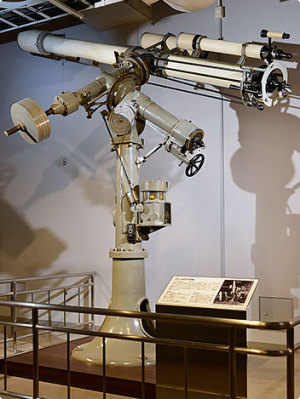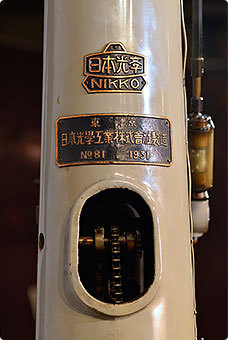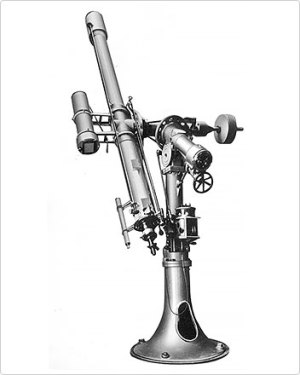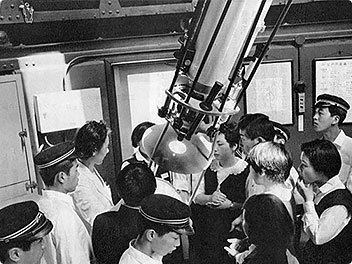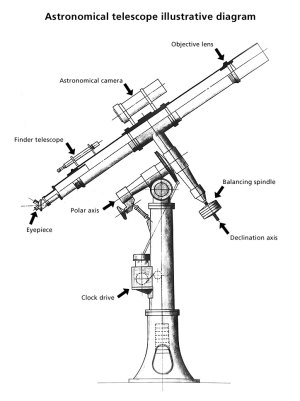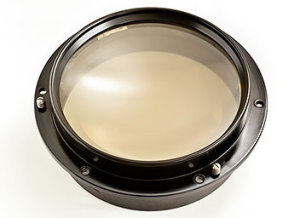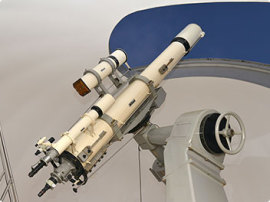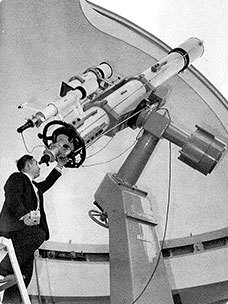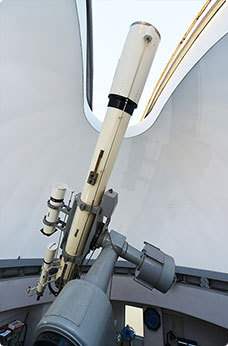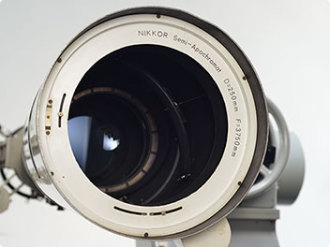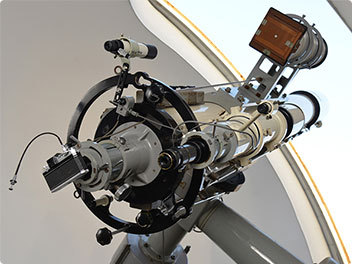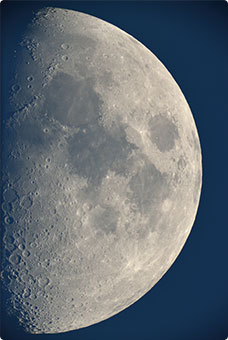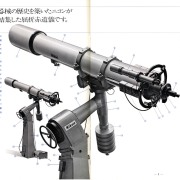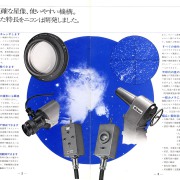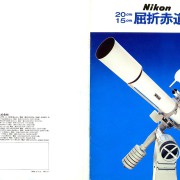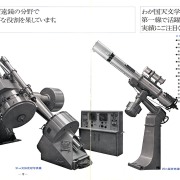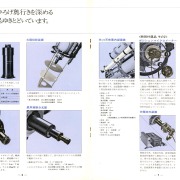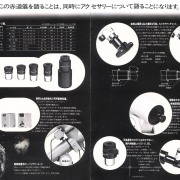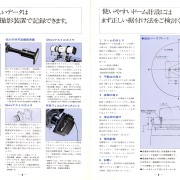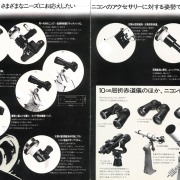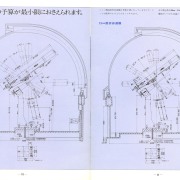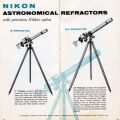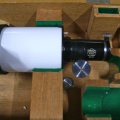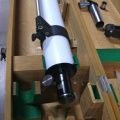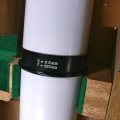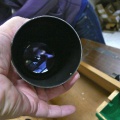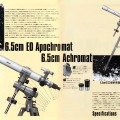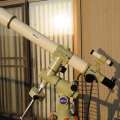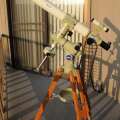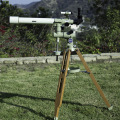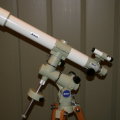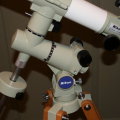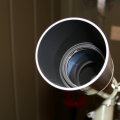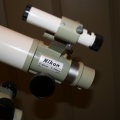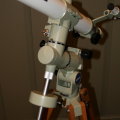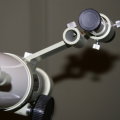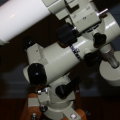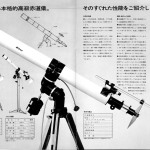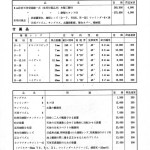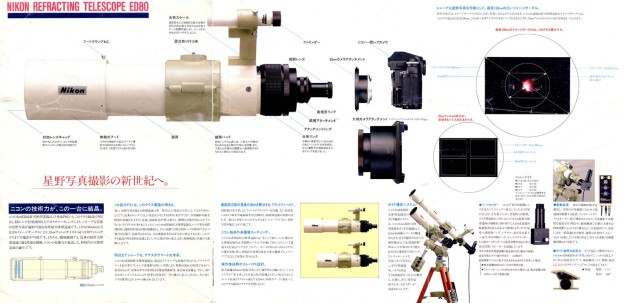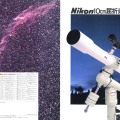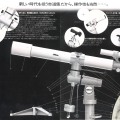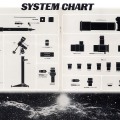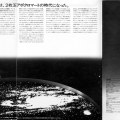NIKON CLASSICI
In questa pagina metterò, un po’ alla rinfusa, alcune delle realizzazioni NIKON - KOGAKU del passato che particolarmente mi colpiscono. Sono mischiati strumenti amatoriali con alcuni prettamente votati a università, musei, ricerca dagli anni ’20 in poi.
Apro le danze con un bell’articolo illustrativo del Nikon da 20 cm. realizzato nel 1931 con fini di ricerca e divulgazione per il Museo Nazionale di Scienze e Natura, rimasto in funzione fino al 2005.
200 millimetri F 18
This article describes the 20 cm refractive equatorial telescope made by Nikon (formerly Nippon Kogaku K.K.) in 1931. It is currently on display as a historical astronomical telescope at the National Museum of Nature and Science in Ueno, Tokyo. Also known as the "8-inch astronomical telescope," the device will hereafter be referred to as the "20 cm equatorial telescope."
The equatorial telescope—performing with distinction for over 70 years
Founded in 1877, the National Museum of Nature and Science is Japan's oldest science museum and its only national museum of general science. On the 1931 completion of new facilities in Ueno at the museum (then known as the Tokyo Science Museum), the 20 cm equatorial telescope was installed in an observation dome on the building's roof. Used for astronomical observation and stargazing events, the telescope remained in use from 1931 right up until 2005. Throughout its working life of over 70 years (a record in Japan), the telescope conveyed the wonders of astronomy to the museum's visitors.
Having completed its mission, the 20 cm equatorial telescope was removed from the observation dome in 2006 and placed in storage. In April 2014, it was put on permanent display in the Exploring the Universe corner in the museum's Global Gallery.
The highest-performance Japanese-made telescope of its day
In the mid-1920s, optical technology in Japan lagged far behind that of the West. Thus, an added goal in building the 20 cm equatorial telescope was to boost domestic technology.
Accordingly, Japanese-made metals and Nikon's best technology at the time were brought together with a view to building Japan's highest-performance refractive equatorial telescope. It was also intended that the objective lens would meet semi-apochromat specifications (the highest-level optical specifications). However, as suitable optical glass was not produced domestically, German-made crown and flint glass were used instead.
Completed in the autumn of 1931, the 20 cm equatorial telescope was the largest domestically built 20-cm-diameter telescope. As well as being the very first genuine equatorial telescope that Nikon had ever produced, it also broke new ground as an early astronomical telescope made entirely in Japan. Its main specifications were as follows:
Diameter: 200 mm
Focal length: 3,600 mm
Relative aperture: f/18 (equipped with iris diaphragm)
Accessories: viewfinder (diameter 50 mm, focal length 500 mm), astro-camera (focal length 500 mm, f/5), solar projection plate
The telescope also used six different types of eyepiece (with focal lengths ranging from 9 mm to 60 mm), which enabled observation at magnifications ranging from 60× to 400×.
A total of more than 5 million people used the telescope for observation
Nowadays, astronomical telescopes are found in observatories and science museums everywhere, and there is no shortage of amateur astronomers who possess the genuine article. At the time that the 20 cm equatorial telescope was first installed, however, astronomical telescopes were extremely rare, and weekend stargazing events attracted many astronomy fans. In addition to restrictions on the number of people who could attend, limits were also imposed on observation time—to around three minutes per person. Special sessions for specific events, such as solar and lunar eclipses or approaching comets, are said to have attracted lines of visitors.
Many visitors also attended the very last observational gathering, which was held on June 8, 2004, to observe the transit of Venus across the Sun.
Highly regarded in terms of optical performance—even today
The image at the center of the 20 cm refractive equatorial telescope's field of view is extremely clear, and in terms of optical performance, the device is regarded as perfectly adequate for use, even today.
However, it does not compare favorably with the astronomical telescopes produced in recent years, which feature advanced automation. One of the telescope's drawbacks is that its mechanism for tracking astronomical objects features a clocking device that employs a counterweight, so that museum staff had to periodically wind up the counterweight during observations. Another disadvantage is that the 20 cm equatorial telescope lacks any function for the automatic alignment of astronomical objects*; the target object had to be manually introduced into the field of view for observation.
Another problem is that, due to the increased level of street lighting and the effects of smog, the night sky above Tokyo's Ueno district (which is said to have allowed the observation of objects as faint as 14th-magnitude stars at the time that the 20 cm equatorial telescope was first installed) now barely allows the observation of second-magnitude stars. Under these circumstances, the museum installed a 60 cm reflective telescope in the dome in place of the 20 cm equatorial telescope.
Making astronomical observation equipment right from the very start
In 1920, in the early years of its history, Nikon was engaged in the manufacture of 5 cm and 7.5 cm diameter refractive telescopes. In 1922, the company built a prototype 50 cm Cassegrain-type*1 reflective equatorial telescope, although it was never put to practical use. In 1931, Nikon built the 20 cm equatorial telescope described in this article.
In 1950, the company manufactured 5 cm and 6.5 cm refractive equatorial telescopes for amateur astronomers. In 1951, Nikon built 15 cm refractive equatorial telescopes, and, in 1965, it began manufacturing improved 15 cm and 20 cm refractive equatorial telescopes.
In addition, the company built numerous other astronomical observation devices, including a 91 cm reflector for photoelectric photometry in 1960, a 91 cm reflector in 1962, a 25 cm coudé-type*2 coronagraph in 1971, a 60 cm astronomical reflective telescope in 1973, a 105 cm Schmidt telescope in 1974 and a 20 cm solar telescope in 1976.
In recent years, the company has been engaged in building observing instruments, such as the Faint Object Camera and Spectrograph (FOCAS) and the High Dispersion Spectrograph (HDS), which was built in 2000 for the Subaru Telescope located on the summit of Mauna Kea on the island of Hawaii.
- *1
Cassegrain-type:
- A reflective telescope comprised of a concave parabolic mirror as the primary mirror and a convex hyperbolic mirror as the secondary mirror, and in which the focal point is just behind the hole in the middle of the primary mirror.
- *2
Coudé-type: - A type of telescope that maintains its focus when pointed in any direction
Potential "Important Cultural Properties"
The list of curators who have been responsible for the 20 cm equatorial telescope at the museum (and who have used it to carry out a great number of observations) includes many famous researchers in the field of astronomy. There are asteroids named after some of these researchers, and the observations of sunspots made with the telescope over the course of a half-century yielded as many as 9,000 valuable documents in the form of sketches.
Keiichi Saijo, curator emeritus at the museum, who used the 20 cm equatorial telescope for observation for many years, comments:
"This equatorial telescope was built by bringing together the best technology that Japan possessed at the time, and thus represents the result of a monumental effort. It is a resource that is extremely important for understanding the development of Japanese optical technology and the history of science and technology in Japan. I believe that its value is such that, in the future, it will be designated as an Important Cultural Property by the government."
The 20 cm equatorial telescope's objective lens is preserved at the National Museum of Nature and
Science.
250 millimetri F 15
The 25 cm refractive equatorial telescope* (hereafter, the 25 cm equatorial telescope) was constructed by Nikon (formerly Nippon Kogaku K.K.) at the request of the Gifu Astronomical Observatory, established in February 1971. This article describes this astronomical telescope—one of the largest refractive astronomical telescopes ever built by Nikon.
- *
Equatorial telescope:
- Astronomical telescope that can track the diurnal motion of an astronomical object
Making astronomical equipment from the very start
In 1920, in the early years of its history, Nikon was engaged in the manufacture of 5 cm and 7.5 cm diameter refractive telescopes. In 1922, the company built a prototype 50 cm Cassegrain-type*1 reflective equatorial telescope. However, it did not perform as well as expected and was never put to practical use.
In 1931, the company made a 20 cm refractive equatorial telescope for the Tokyo Science Museum (now the National Museum of Nature and Science). This telescope was highly acclaimed and remained in place there until 2006.
In 1950, the company produced 5 cm and 6.5 cm refractive equatorial telescopes for amateur astronomers. In 1951, Nikon built 15 cm refractive equatorial telescopes for use by observatories and similar establishments. In 1965, it began manufacturing improved 15 cm and 20 cm refractive equatorial telescopes.
In addition, the company built numerous other astronomical observation devices, including a 25 cm coudé-type*2 coronagraph in 1971, a 60 cm astronomical reflective telescope in 1973, a 105 cm Schmidt telescope in 1974 and a 20 cm solar telescope in 1976.
- *1
Cassegrain-type: - A reflective telescope comprised of a concave parabolic mirror as the primary mirror and a convex hyperbolic mirror as the secondary mirror, and in which the focal point is just behind the hole in the middle of the primary mirror.
- *2
Coudé-type: - A type of telescope that maintains its focus when pointed in any direction
An observatory established by an amateur astronomer
The 25 cm equatorial telescope was installed at the Gifu Astronomical Observatory, a private observatory established by Kazutada Masamura (hereafter, Kazutada), who was the observatory's first head.
Born in 1920, Kazutada was a keen astronomer from a very young age. As a fourth-grade elementary school student, he took advantage of a solar eclipse as an opportunity to begin observing sunspots. The results of these observations were so highly regarded that he was permitted, as a sixth-grader, to become a member of the Oriental Astronomical Association*.
In 1940, at the age of 20, he built the Masamura Astronomical Observatory—at his own expense—on a mountain near his home.
In the 1950s, the local authorities in his hometown planned to establish an observatory. Due to the damage caused to the town by the Ise Bay Typhoon in 1959, however, the plan was abandoned. As a result, Kazutada resolved to invest his own money in the construction of the observatory. Contributions were received from 900 donors nationwide (including astronomy lovers), who supported his plan.
Kazutada's desire that children experience the wonders of space came to fruition in the form of the Gifu Astronomical Observatory.
- *
The Oriental Astronomical Association:
- Founded in 1920 as the Astronomical Society, it is Japan's oldest astronomy organization. In 1943, it was renamed the Oriental Astronomical Association. In 2012, the association was incorporated as a non-profit organization.
A fascination with refractive telescopes and large diameters
A reflective telescope forms images by reflective light using a concave mirror. One advantage of concave mirrors is that they tend not to produce chromatic aberration, making it easy to produce a concave mirror with a diameter that is larger than the diameter of the lenses. Inevitably, however, the reflectivity of the mirror's surface will deteriorate over time, necessitating periodic replating of the reflective surface.
In a refractive telescope, images are formed by refractive light through a lens. Large-diameter refractive telescopes are difficult to build. However, replating is unnecessary. In addition, the measures taken to eliminate stray light so as to curb reflection within the lens tube enable the production of high-contrast, low-noise images. Keenly aware of these characteristics, Kazutada opted for a refractive telescope.
Kazutada ordered the largest possible observation dome that could be built (one with a diameter of 6.5 m), with the aim of installing the best possible telescope in it. He decided that this would be an instrument with a diameter of 25 cm and a focal length of 3,750 mm. Since it would also incorporate certain unique features, he decided that this should be a custom-built telescope rather than a mass-production model.
In August 1968, he commissioned Nikon to build the telescope. With the construction process lasting approximately two and a half years, installation of the telescope was completed in January 1971.
Specifications of the 25 cm refractive equatorial
telescope
Objective lens: semi-apochromat
Diameter: 250 mm
Focal length: 3,750 mm
Relative aperture: f/15
Resolution: 0.5 secs
Aperture range: f/15 (250 mm)-f/37.5 (100 mm)
Accessories: viewfinder (diameter 100 mm, focal length 1,000 mm), astro-camera (focal length 600 mm, f/4.8), equipment to enable photography with a Nikon F, and various others
The iris diaphragm
The camera lens was equipped with an iris diaphragm (hereafter, diaphragm) to regulate the amount of light incident on the lens. It was unusual, however, for a diaphragm to be installed in an astronomical telescope, and the fact that the 25 cm equatorial telescope was equipped with a diaphragm made it unique among astronomical telescopes manufactured by Nikon. Installed at the request of Kazutada, the diaphragm is used to reduce the aperture of the telescope, with the following advantages:
- It enables easy adjustment of the amount of light allowed into the telescope when observing or photographing bright astronomical objects such as the sun or the moon.
- It reduces aberrations and is thought to make the observed images clearer.
- It can improve "seeing"* in some instances, making the observed image clearer.
By specifying the inclusion of the diaphragm, Kazutada was attempting to maximize the telescope's performance. His zeal for, and extensive expertise in, astronomical observation was indeed impressive.
- *
Seeing: - The motion of air refracts light from astronomical objects. As a result, the observed images twinkle and appear blurred. This effect is called "seeing."
The iris diaphragm, which is comprised of 15 blades. The diaphragm is controlled by turning the handle by the side of the eyepiece. The cap on the objective lens can also be opened and closed using a handle by the side of the eyepiece.
Per vedere il fuzionamento del diaframma ad iride guardare il sito originela con il filmato: http://www.nikon.com/about/feelnikon/recollections/r29_e/index.htm
The largest ever NIKKOR telephoto lens
The inscription "NIKKOR" is engraved on the end of the 25 cm equatorial telescope. Since NIKKOR is the brand name for Nikon-made photography lenses, this inscription is essentially never found on telescopes. Thus, this 25 cm equatorial telescope bearing the NIKKOR name represents an extreme rarity.
Today it is unclear why this imprint was made. The telescope did, however, attain a high level of optical performance that was well up to the standards required for photography. It was equipped with a diaphragm, and its specifications were geared towards photography. At the time, the role of photography in astronomical observation was highly significant. It is for reasons such as these that the NIKKOR imprint was likely made.
In short, with a focal length of 3,750 mm, the 25 cm equatorial telescope also represents the largest F-mount NIKKOR telephoto lens ever produced.
Continuing to inspire children with dreams of space
By the end of 2013, more than 600,000 people had visited the Gifu Astronomical Observatory in the course of its 40-plus-year history. Ever since the observatory opened, it has provided lectures at junior-high schools and community centers within the city of Gifu. In cooperation with local universities, it is also active in science education. In recent years, more than 2,000 people per year have visited the observatory on days when it is open to the public and when it offers astronomy classes. These visitors include astronomy enthusiasts from far afield as well as local families.
The current head of the Gifu Astronomical Observatory is Kazuhito Masamura, Kazutada's second son, who has inherited his father's vision. Assisted by a staff of volunteers, he now runs the observatory. Almost all the volunteers are people who came to the observatory as children, developed a love of astronomy, and have continued their astronomical observations ever since.
Children shout with glee at the sight of craters on the moon when they look through the eyepiece of the telescope during the astronomy classes. The chance to observe astronomical objects—even relatively close objects like the moon—represents a valuable experience.
In line with Kazutada's wishes, children are still being given a sense of the wonders of space.
